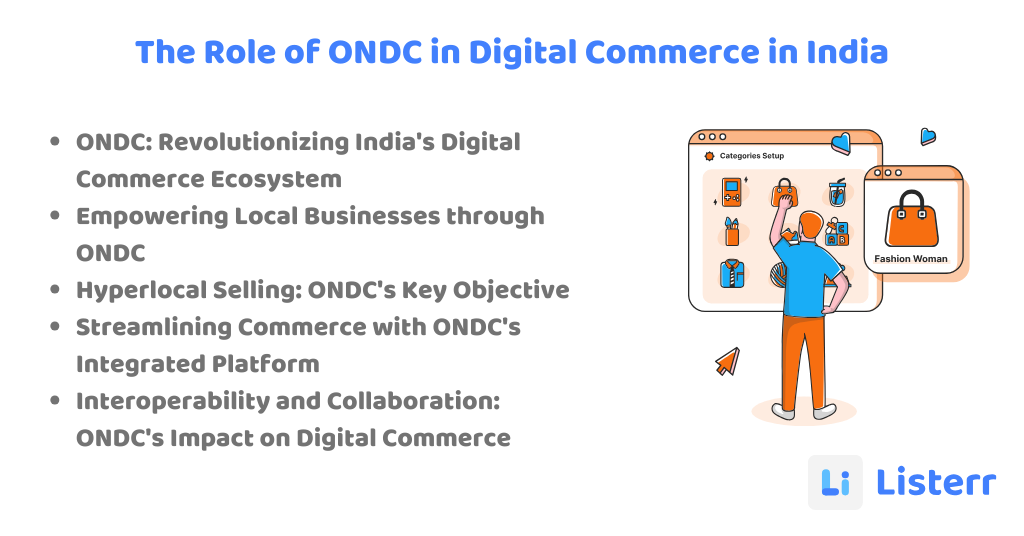Introduction:
In recent years, the landscape of digital commerce in India has undergone a significant transformation. With the rise of e-commerce giants like Amazon and Flipkart, consumers have become accustomed to the convenience of online shopping. However, there is a growing trend towards hyperlocal selling, which promises to revolutionize the way businesses operate in India. Hyperlocal selling involves connecting local retailers with nearby customers through digital platforms, offering the convenience of online shopping while supporting local businesses. One notable player in this space is Listerr, which is leading the way in enabling local businesses to thrive in the digital age.
The Rise of Hyperlocal Selling:
Hyperlocal selling is not a new concept in India. For decades, neighborhood kirana stores and small businesses have been an integral part of the Indian retail landscape. However, with the advent of e-commerce, many of these businesses have struggled to compete with the convenience and affordability offered by online marketplaces. Hyperlocal selling seeks to bridge this gap by leveraging technology to connect local retailers with consumers in their vicinity.
One of the key drivers behind the rise of hyperlocal selling is the increasing demand for personalized and convenient shopping experiences. Today’s consumers are looking for products and services that are tailored to their individual needs and preferences. Hyperlocal selling allows businesses to cater to these demands by offering a curated selection of products and services that are relevant to their local customer base.
Another factor contributing to the popularity of hyperlocal selling is the growing emphasis on sustainability and supporting local economies. By patronizing local businesses, consumers can reduce their carbon footprint and contribute to the economic development of their communities. Hyperlocal selling platforms like Listerr are helping to facilitate this shift towards more sustainable and community-focused consumption patterns.
The Role of ONDC:
The Open Network for Digital Commerce (ONDC) is a government-led initiative aimed at creating a unified digital commerce ecosystem in India. Launched in 2020, ONDC seeks to enable seamless connectivity between buyers, sellers, and service providers through a common digital infrastructure. By standardizing protocols and data formats, ONDC aims to reduce the barriers to entry for small and medium-sized businesses, allowing them to compete more effectively in the digital marketplace.
One of the key objectives of ONDC is to promote hyperlocal selling by providing local businesses with the tools and resources they need to establish a digital presence. Through the ONDC platform, retailers can create online storefronts, manage inventory, process payments, and fulfill orders, all within a single integrated system. This not only streamlines the selling process but also makes it more accessible to businesses of all sizes.
The ONDC platform also facilitates greater collaboration and interoperability between different stakeholders in the digital commerce ecosystem. By providing open APIs and data-sharing mechanisms, ONDC enables seamless integration between various service providers, including logistics companies, payment gateways, and marketplaces. This interoperability fosters innovation and competition, driving down costs and improving the overall efficiency of the digital commerce ecosystem.

Listerr: Empowering Local Businesses with Hyperlocal Selling:
Listerr is a leading hyperlocal marketplace that is leveraging the power of ONDC to empower local businesses across India. Founded in 2019, Listerr aims to democratize access to digital commerce by providing a user-friendly platform where retailers can easily list and sell their products online.
One of the key features of Listerr is its focus on hyperlocal discovery. Using advanced geolocation technology, Listerr allows users to discover nearby businesses and products based on their current location. This enables retailers to reach customers in their vicinity and provides consumers with a convenient way to shop for locally sourced goods and services.
In addition to its hyperlocal focus, Listerr also offers a range of tools and services to help businesses succeed in the digital marketplace. From inventory management and order fulfillment to marketing and analytics, Listerr provides all the essential features retailers need to run their online storefronts effectively. Moreover, Listerr’s integration with the ONDC platform ensures seamless connectivity with other service providers, making it easier for businesses to manage their operations and scale their growth.
Conclusion:
Hyperlocal selling has the potential to revolutionize the digital commerce landscape in India by empowering local businesses and providing consumers with personalized and convenient shopping experiences. With the support of initiatives like ONDC and platforms like Listerr, local retailers have the opportunity to thrive in the digital age and contribute to the economic development of their communities. As the hyperlocal selling trend continues to gain momentum, it is clear that the future of digital commerce in India lies in connecting businesses with their local customers in innovative and meaningful ways.
To know about How ONDC is Redefining Buyer-Seller Relationships Click Here
AccountabilityConsumer ConfidenceData SecurityDigital CommerceDispute ResolutionE-CommerceFair CompetitionIndiaONDCRatingsReviewsSmall and Medium EnterprisesSMEsTransparencyTrust

